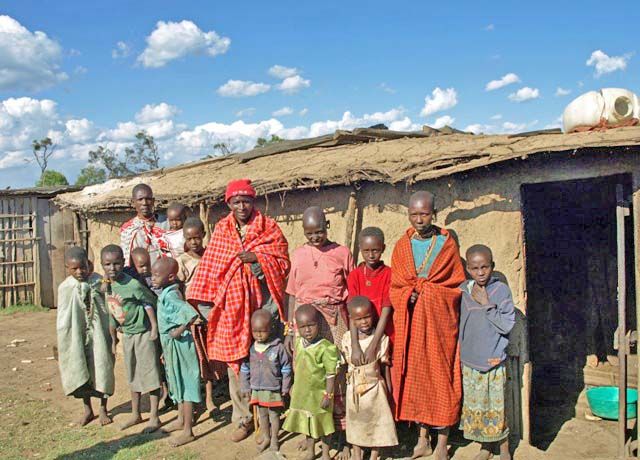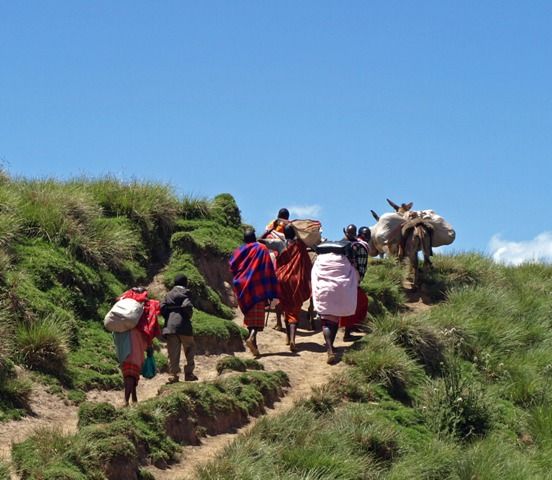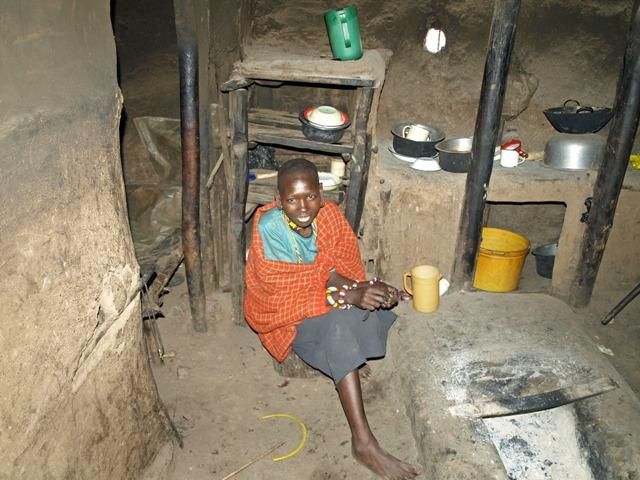Edward Kosen's offer to slaughter a sheep in honor of my visit was a great breakthrough.
All along the road (if you can call that rutted, washboard trail a road) leading to Kosen's farm in western Kenya's highlands, people from Kosen's Maasai tribe had run from my camera. Hapana . . . hapana . . . hapana (no . . . no . . . no) they said in Swahili when I begged for photos.
To be sure, a few Maasai people stood for photos in the provincial town of Narok, adorned with their traditional beads and red blankets. It was a commercial photo-op for tourists enroute to Masai Mara National Reserve, and it didn't count for me.
The first break in reserve of the ordinary Maasai people came because, like farmers everywhere, they welcomed a chance to gripe about their crops. With the help of a local crop scientist, I had arranged to meet Kosen and several of his neighbors at an open field on the semi-arid highlands they have called home for generations. The landscape looked like South Texas without the prickly pear and with scrub Acacia trees in place of the mesquite.
Shyly at first, Kosen leaned on the long stick he carried (all of the men and boys had similar sticks) and started his story of the stem rust disease that has attacked his wheat for three years, slashing yields and alarming wheat experts worldwide. Soon the other farmers crowded in. Suddenly, everyone wanted to be interviewed.
Photos? Brief hesitation. OK!
Women, kids and farmers alike giggled nervously into the lens. They insisted on posing. Nothing I said could convince them to carry on with ordinary activities while the camera pointed at them. So they stood stiffly together while I clicked away.
Kosen agreed to take us to his house. It was a treat even for the Kenyan crop scientist, Ruth Wanyera, who had never seen the inside of a traditional Maasai home.
Turned out Kosen had two houses. One, a wooden shanty, was for his second wife. To our delight, he took us to the traditional homestead where his first wife and kids lived. Made of mud and wood slats, it was surrounded by rail-fenced pens for Kosen's sheep, goats and cows. A separate hut, for grain storage, also served as a closet for the family's colorful shawls and other clothing. Maybe it was coincidental, but it struck me that the sweet smell of the grain functioned much like the dried flower-petal sachets we buy for our closets in the U.S.
Kosen's first wife, Nomesenyik Kosen, walked into the yard with a load of firewood on her back. She didn't like me. She thought I was British.
"USA. Obama," the men explained to her. She ran to the grain shed, grabbed a beautiful shawl and smiled into the camera along with her three children.
It was a sweet moment. But Wanyera, the local scientist, was looking for greater architectural purity. This house had a corrugated tin roof, a modern alteration to the traditional Maasai style. So Kaitekei Kishoyan led us to his house nearby. The mud walls were the same as Kosen's, but the roof was made of leaves and cow dung.
Could we look inside? That was asking too much. But after a minute, Kishoyan's first wife led us into the dark interior.
In the center was a fire pit where she cooked meals. Over the years, soot from the fire had blackened the walls. Among her utensils was an animal skin bag which she filled with milk from the cow. Her husband drank from it first, we were told; she and the children shared what was left.
Her husband's bed on one side of the pit was covered with a blanket of cow leather. On the other side was a smaller bed where she slept with the children. There were two small stools, one for her and one for her husband. And, for visitors, there was a narrow wooden bench near the doorway.
Back in the sunshine of the yard, kids swarmed around Wanyera and me. Shyness had evaporated like the morning dew.
But we couldn't accept Kosen's offer to stay for a meal of fresh mutton. After all, I had come to learn about a crop failure. Some of these farmers were selling sheep to cover their losses and feed this multitude of kids.
Also, the sun was sinking toward the horizon and we were at least three hours from our base in Njoro. The driver fretted about traversing that rutted road in the dark.
And there was no room for us in those little beds.





